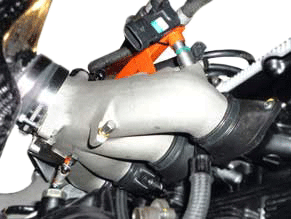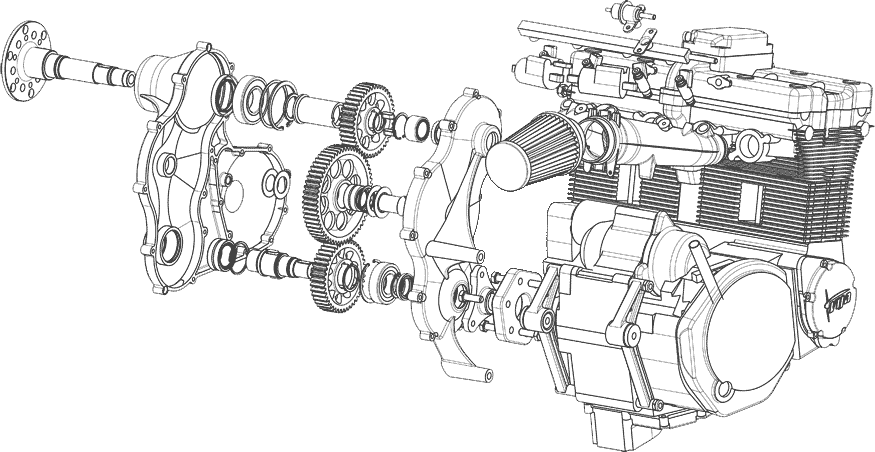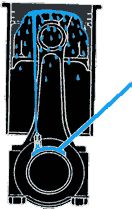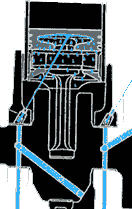Many innovations, of common use in the car & motorcycle industry have been adapted to " Vija aircraft engines ® " products, and make them economic for your operations budget, as well as environment friendly.
• 4-in-line cylinders, 4 stroke, 16 valves and DOHC
The Vija aircraft engines is based on a motorcycle engine, first released in 1985, which equipped various models, in different displacements, for over 20 years.
Made of Aluminum alloy, it is compact, and with high energy output. Thanks to the 16 valves and double overhead camshafts, we obtain optimized internal combustion, low fuel consumption, and a fast response to gas demand.
The 4 in-line cylinders produce a soft and harmonious sound, and so, respect the environment and the local residents.
With no functional vibrations, " Vija aircraft engines ® " avoid a premature ageing of the airframe.

• Injection

Designed by "Vija aircraft engines®", the electronic fuel injection system coupled to ECU (Engine Control Unit) almost eliminates all risks of icing, and simultaneously controls ignition and mixture, depending of the outer air temperature and pressure .
The engines management just requests a single throttle lever.

• Reduction gearbox

Manufactured in high-strength steel, the reduction gearbox wheels are carburized and rectified.
Reduction gearbox is located inside the engine, between the multi-disks clutch damper, and the "flector" of the transmission gearbox.
This way, it is isolated on both sides from engine and propeller jolts.

• Transmission
The power transmission between the engine output and the propeller is done by a gearbox, made of strong aluminum alloy, which has no reduction ratio. The fastest gear wheels thus turn at the propeller speed (2800 RPM maxi). Gear wheels with straight-set teeth are carburized and rectified. The engine is connected to the gearbox through a "flector".
Lubrication of the transmission box is separate from the engine, and is made by sparging the wheels in a 75w90 grade oil.

Since 2014, the transmission housing of " Vija Aircraft Engines® " series "Si" (high output) is machined with a pre bored plate that can support a variable pitch control system.
A hollow drive shaft allows controlling the propeller pitch by any hydraulic or electric system.
The dimensions of the mounting plate are compatible with the Duc " Flashback " propeller pitch control system .


• Cooling system
Following the example of Porsche engines, "Vija aircraft engines®" use a technology of global cooling by oil, commonly used in the motorcycle environment.
This system called SACS (Suzuki Advanced Cooling System), was developped in the middle of 1980s.
It enables a global cooling of the engine by using the lubricant as a calorific vector. Instead of being cooled externally, moving components are greased and cooled at the same time. This way, temperatures at every critical point of the engine are homogeneous. An immersed, double body oil pump, coupled to oil pressure sensors, simultaneously feeds the lubrication circuit and the radiator.
As makes a calorstat on a liquid cooling system, oil exceeding 60°C is automatically directed toward the radiator in order to be cooled.
The oil pressure from 3 to 6 bars, at 60°C, enable a remarkably efficient system.
Besides, during the raise in temperature, oil stays in its totality within the engine.
How "Vija aircraft engines"-SACS cylinder heads and cylinders are cooled and lubricated :

"Vija aircraft engines®" are of wet sump type.
Wet sumps have a double advantage:
-
the totality of lubricant is stored in the engine, without need
for an external tank.
-
the lubricating power during critical phases (start up,
demand ofcontinuous power...) is increased thanks to
injectors pulverizing oil directly on solicited engine parts
(bottom of piston cap, connecting rods, rocker levers).
The SACS cooling system has several advantages:
-
Simplicity: a single oil radiator and two hoses.
-
maintaining stable temperatures of use by the appropriate sizing of the unique radiator and its air duct.
-
Lubrication from the first piston movement with permanently lubricated bearings .
-
No cooling liquid hence less risks of leaks.
-
Fast "in flight" temperature control (a single oil temperature gauge is sufficient).
-
Rapid raise and homogeneity of the temperatures in all the engine parts: oil sump, cylinder heads, pistons, valves and internal reductor.

Oil jets help to cool piston caps, connecting rods and crankshaft.

"Vija aircraft engines®" has tested this system in extreme conditions and made a temperature mapping. The thermal differences are very slight, and allow for a normal work in fatigue. No cases of break-in, premature wear or seizure was recorded.
This system exists for more than 20 years, and thousands of motorcycles, kart-cross, recreational or sport vehicles and some ultralight planes are equipped with SACS-type engines; never this lubrication system has failed.
On the contrary, these engines are recognized for their solidity, reliability and ease of use.
• Fuel consumption
With a specific fuel burn of 198gr/kW/hour, " Vija aircraft engines ® " are among the most economic of the market. The engines' architecture, and a successful adaptation of electronic injection with specific cartography achieve these results.
Flight tests demonstrated a fuel consumption of 8 liter/hour during economic or instruction flights with the J-10Si (100HP) mounted on our XK9 aircraft .

